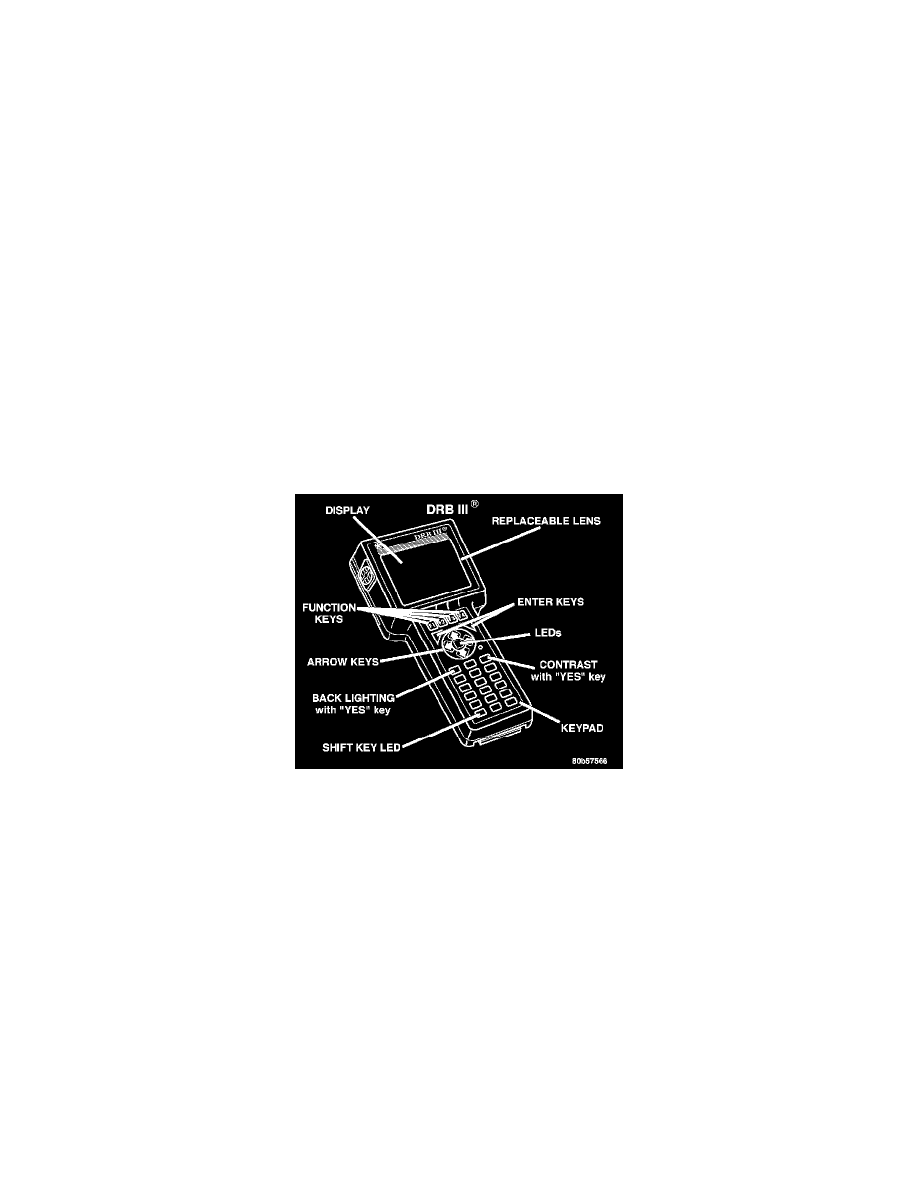Sprinter 2500 L5-2.7L DSL Turbo (2003)

Body Control Module: Scan Tool Testing and Procedures
DRB III Error Messages and Blank Screen
Under normal operation, the DRBIII(R) will display one of only two error messages: user-requested WARM Boot or User-Requested COLD Boot. If the
DRBIII(R) should display any other error message, record the entire display and call the STAR Center. This is a sample of such an error message
display:
ver: 2.14
date: 26 Jul93
file: key_iff.cc
date: Jul26 1993
line: 548
err: 0xi User-Requested COLD Boot
Press MORE to switch between this display and the application screen.
Press F4 when done noting information.
DRBIII(R) DOES NOT POWER UP (BLANK SCREEN)
If the LED's do not light or no sound is emitted at start up, check for loose cable connections or a bad cable. Check the vehicle battery voltage (data link
connector cavity 16). A minimum of 11 volts is required to adequately power the DRBIII(R). Check for proper grounds at DLC cavities 4 and 5.
If all connections are proper between the DRBIII(R) and the vehicle or other devices, and the vehicle battery is fully charged, an inoperative DRBIII(R)
may be the result or a faulty cable or vehicle wiring.
DISPLAY IS NOT VISIBLE
Low temperatures will affect the visibility of the display. Adjust the contrast to compensate for this condition.
DRB III Safety Information
WARNING: EXCEEDING THE LIMITS OF THE DRBIII(R) MULTIMETER IS DANGEROUS. READ ALL DRBIII(R) INSTRUCTIONS
BEFORE USING THE MULTIMETER. FAILURE TO FOLLOW THESE INSTRUCTIONS CAN RESULT IN PERSONAL INJURY OR
DEATH.
-
Follow the vehicle manufacturer's service specifications at all times.
-
Do not use the DRBIII(R) if it has been damaged.
-
Do not use the test leads if the insulation is damaged or if metal is exposed.
-
To avoid electrical shock, do not touch the test leads, tips, or the circuit being tested.
-
Choose the proper range and functions for the measurement. Do not try voltage or current measurement that may exceed the rated capacity.
